DEJAVU TRAVEL
DEJAVU TRAVEL
We have engaged in transportation for more than 8 years and more than 10 years of experience in the tourism

Enterprise purpose
Safety first and make guest be happy and satisfied

Enterprise mission
Provide professional and excellent service, to escort guest on every journey

Enterprise target
Provide global services and become your best choice

Enterprise vision
Provide high-quality travel services in the whole world
日本 JAPAN - So many great places to see

We Are Specialists In Japan And Its Attractions!
Japan, island country lying off the east coast of Asia. It is one of the most popular travel destinations in the world. It is a unique blend of traditional and modern, with many temples and buildings from the past co-existing with modern achievements in architecture and technology. Visitors can be immersed in Japanese history and culture one day and get a glimpse of the future through technological developments the next. The Japanese landscape is beauty, rugged, with more than four-fifths of the land surface consisting of mountains. There are many active and dormant volcanoes. Abundant precipitation and the generally mild temperatures throughout most of the country have produced a lush vegetation cover. On this page we bring you tips for places in Japan that are definitely worth seeing and visiting!
TOKYo Recommended
Recommended places in Tokyo to see

Tokyo Tower
One of the symbols of Tokyo. The official name is Japan radio tower. There is a platform on the tower, which has a panoramic view of the whole Tokyo. When the weather is fine, you can overlook Mount Fuji. And there are also Tokyo Tower aquarium, One piece theme park and various souvenir shops. It was opened to the public on 23 December 1958. The Tower has two mascots named ノッポン Noppon. Every five years, the tower is repainted in a process that takes about a year to complete.
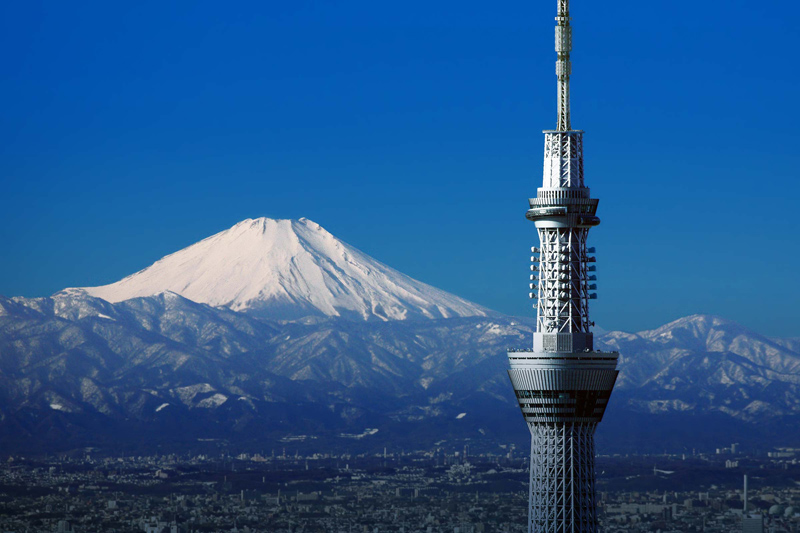
Tokyo Skytree
As a landmark of Tokyo, the 634m high Tokyo Skytree was recognized by the Guinness World Records Company on November 17, 2011 as the tallest tower in the world. The tower is the primary television and radio broadcast site for the Kantō region; the older Tokyo Tower no longer gives complete digital terrestrial television broadcasting coverage because it is surrounded by high-rise buildings.

Tokyo Disneyland
According to the American Disney theme park design. It is mainly divided into seven areas: World market, adventure park, western park, new biology area, dream park, cartoon city and future park. By 1994, over 149 million people had entered through the gates of Tokyo Disneyland, more than Japan's entire population of 127.6 million at the time. In 1996, it employed 12,390 people, making Tokyo Disneyland the biggest workplace in Japan's diversionary outings at that time
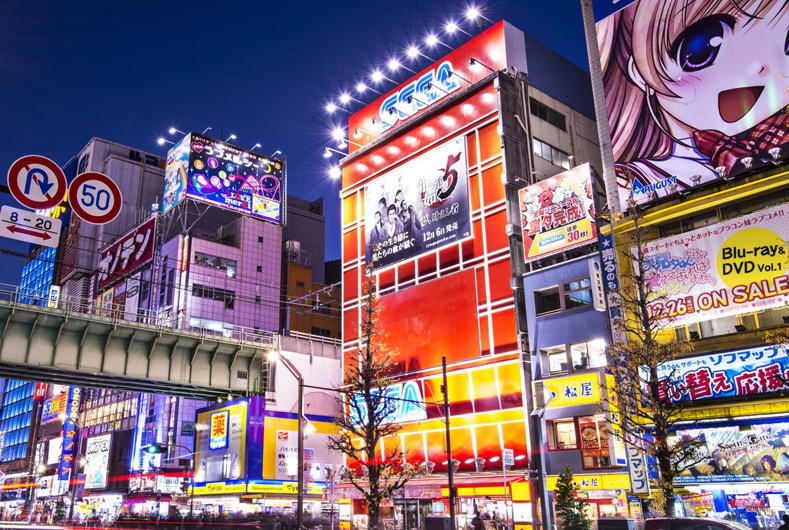
Akihabara
One of the few electrical streets in the world. There are more than 300 electronic product stores, model toy stores, animation product stores and theme cafes. It is a paradise for animation fans. The name Akihabara is a shortening of Akibagahara (秋葉ヶ原), which ultimately comes from Akiba (秋葉), named after a fire-controlling deity of a firefighting shrine built after the area was destroyed by a fire in 1869. Akihabara is considered by many to be the centre of modern Japanese popular culture and a major shopping district for video games, anime, manga, electronics and computer-related goods.
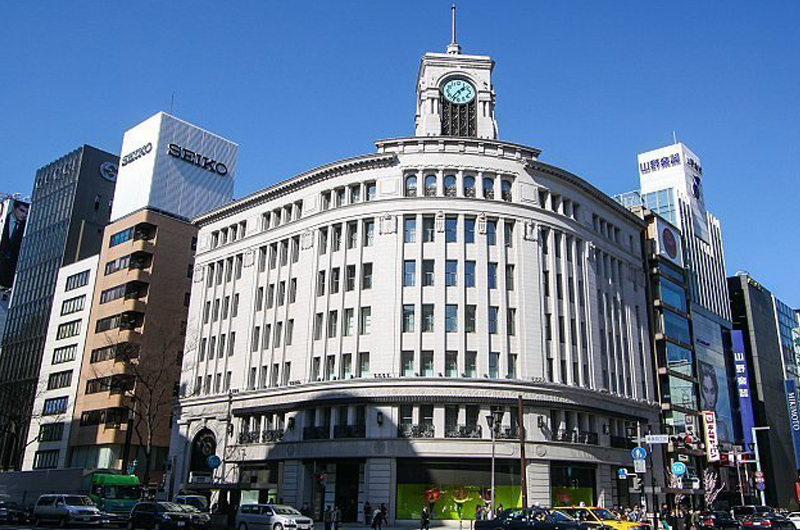
Ginza
The most powerful and representative commercial street in Japan, shoppers' paradise. As famous as the Champs Elysees in Paris and the Fifth Avenue in New York, it is one of the three prosperous shopping streets in the world. Ginza was built upon a former swamp that was filled in during the 16th century. The name Ginza comes after the establishment of a silver-coin mint established there in 1612, during the Edo period. Its recent history has seen it as a prominent outpost of Western luxury shops. Ginza is a popular destination on weekends.
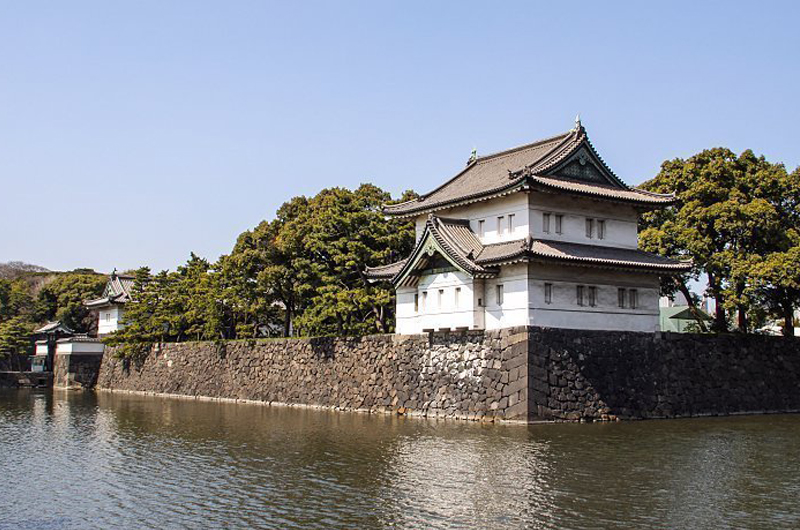
Tokyo Imperial Palace
The place where the Mikado live, is the main residence of the Emperor of Japan. It is generally to visit the periphery of imperial palace, including Kokyogaien national garden, the east gardens of the imperial palace, Kitanomaru Park. It is built on the site of the old Edo Castle. The total area including the gardens is 1.15 square kilometres (0.44 sq mi). arious ceremonies and public activities are held there too. Other major buildings in the Palace include the building of the Imperial Household Agency and the Palace Sericulture Centre.
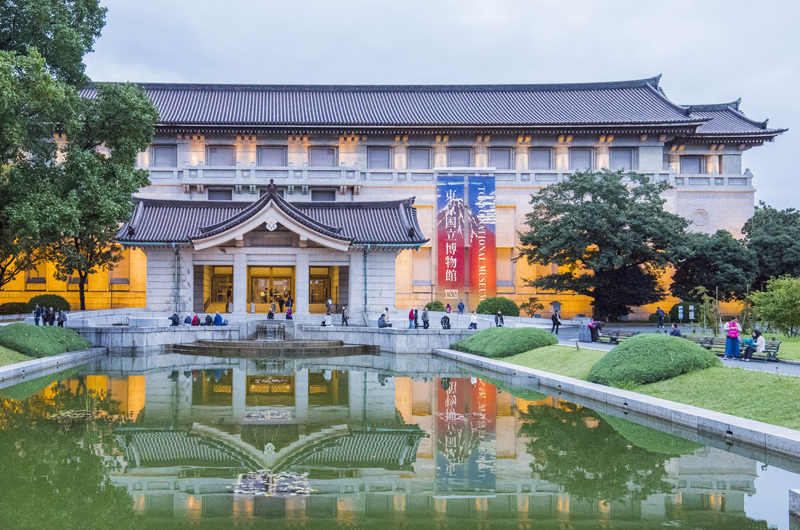
National Museum
The museum collects and displays the important cultural heritage of Japan and the whole Tokyo region. It has always been known as the "Museum of architecture". Moreover there are two floors of space to show Chinese culture, a collection of Chinese cultural relics. It is one of the four museums[a] operated by the National Institutes for Cultural Heritage (ja:国立文化財機構), is considered the oldest national museum in Japan, is the largest art museum in Japan, and is one of the largest art museums in the world.
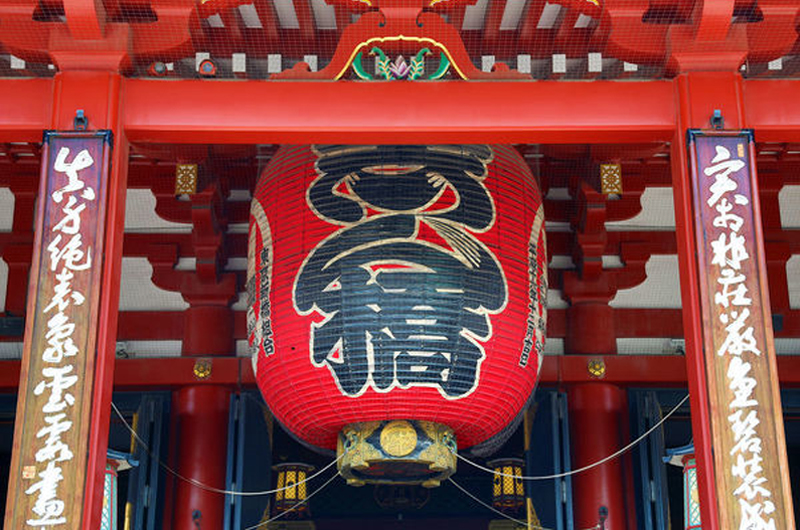
Asakusa Historical Museum & Kaminarimon
The most famous and ancient temple in Tokyo, there is golden Guanyin which was accidentally salvaged by local fishermen in 628. The gate at the entrance of temple that the famous historic sites Kaminarimon was built in 942 to pray for peace and abundant grain. That is the huge lantern hanging in front of the door, which is 3.3 meters high and weighs 700 kilograms. The word "雷门" with black background and white edge can be seen in the lantern.
Kyoto recommendation
Kyoto recommendation
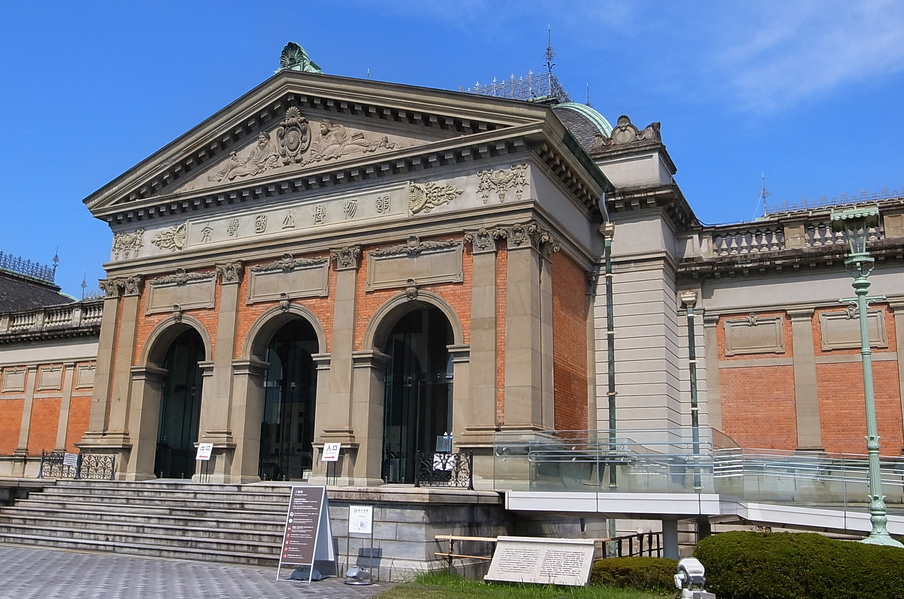
Kyoto National Museum
It is famous for its gorgeous architecture and exquisite garden design. There are old and new two galleries. The collection of Kyoto art and handicrafts is rich, and the number has exceeded 10000, very precious cultural heritage. The old exhibition hall is a building that represents the essence of Meiji architecture, while the new exhibition hall holds permanent exhibitions of culture. Sanjusangendo is opposite the museum, is the main buddha hall of Rengein, which refers to "the Buddha Hall with 33 sections of space between beams and columns".

Arashiyama
Arashiyama is a tourist attraction in Kyoto. Designated as national historical sites and places of interest. It is composed of Arashiyama and Sagano. Arashiyama Park is located at near Hozukyo. It is composed of Kameyama, Nakanoshima and Rinsen-ji Temple. It is a famous place for cherry blossoms in spring and maple leaves in autumn. Sagano bamboo forest, the path is about 500 meters. Passing through the bamboo forest, you can hear the natural sound of the wind blowing through the bamboo leaves. It is rated as one of the 100 most memorable sounds in Japan.

Kiyomizu-dera
Kiyomizu-dera (Japanese: 清水寺) is a Buddhist temple located in eastern Kyoto, Japan. The temple is part of the Historic Monuments of Ancient Kyoto (Kyoto, Uji and Otsu Cities) UNESCO World Heritage site. Kiyomizu-dera is located on the foothills of Mount Otowa, part of the Higashiyama mountain range that dominates eastern Kyoto. The main hall has a large veranda, supported by tall pillars, that juts out over the hillside and offers impressive views of the city. Large verandas and main halls were constructed at many popular sites during the Edo period to accommodate large numbers of pilgrims.
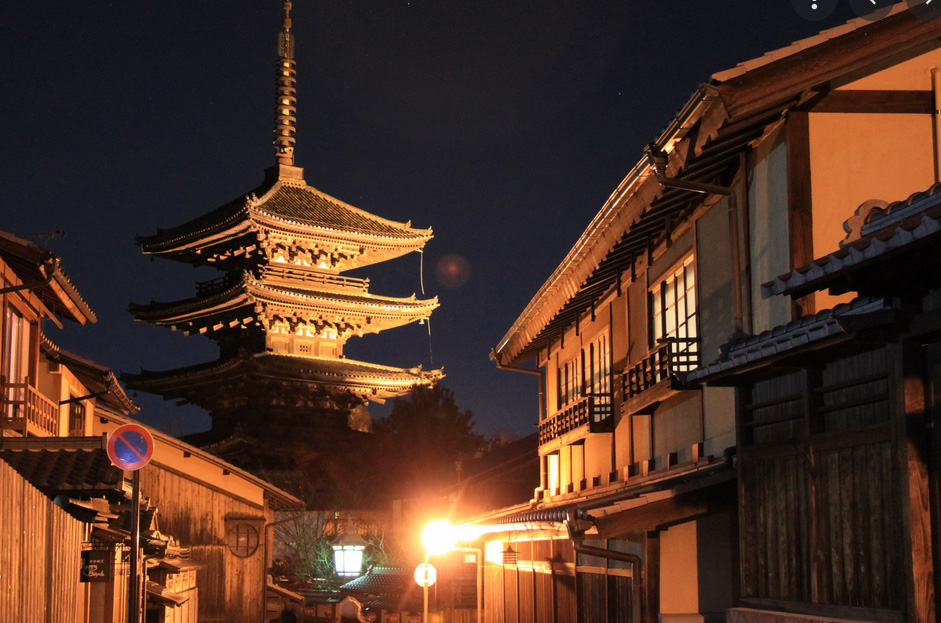
Sannenzaka & Ninenzaka
The old cobblestone streets of Ichinenzaka, Ninenzaka, and Sannenzaka have prospered since ancient times. These sloping streets are lined with historic Japanese-style buildings that typify Kyoto, even including many souvenir shops. Nearby Kodaiji Temple and Yasaka Shrine also make these narrow streets part of a popular sightseeing route centering on Kiyomizu Temple.
Here you can immerse yourself in the atmosphere of Kyoto, with Kiyomizu’s three-tiered pagoda overlooking private houses and scattered temples as you ascend the gentle incline.
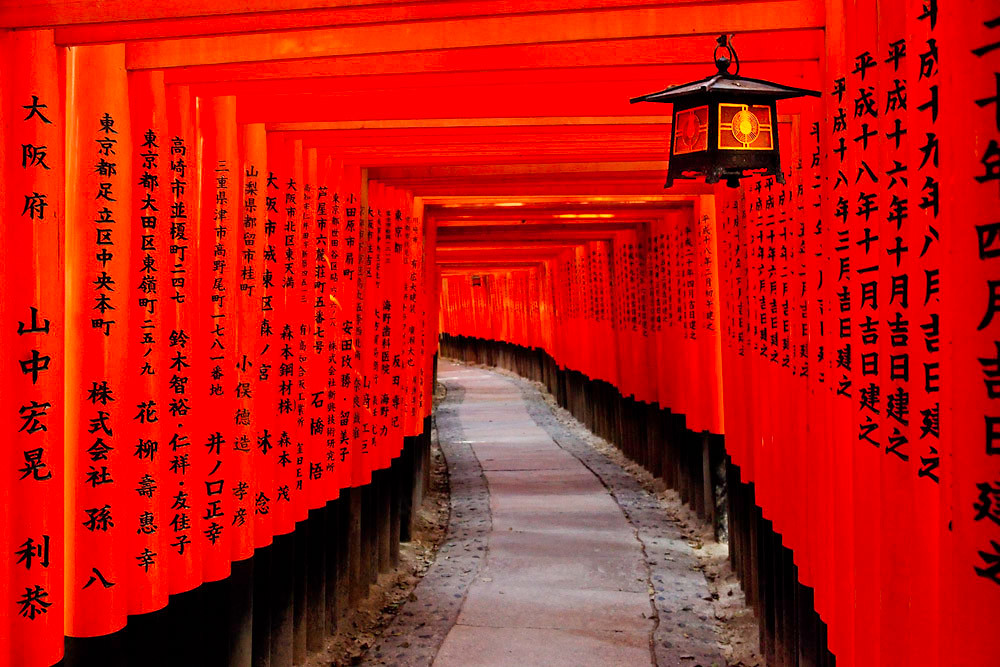
Fushimi Inari Taisha
About 1 / 3 of the shrines in Japan belong to the Inari shrine. Fushimi Inari Taisha is the general headquarters of Inari shrine with high social status and long history. At the entrance stands the otorii, followed by the main hall of the shrine and other buildings, especially the "Senbon Torii"is one of the representative landscapes in Kyoto and has also appeared in the film Memoirs of a Geisha.

Maruyama Park
Maruyama Park (円山公園, Maruyama kōen) is a park in Kyoto, Japan. It is noted as the main center for cherry blossom viewing in Kyoto, and can get extremely crowded at that time of year (April). The park's star attraction is a weeping cherry tree (shidarezakura) which becomes lit up at night. The main entrance to the park is through Yasaka Shrine, which sits at the eastern end of Shijō Street in the Gion District. Directly to the north (and abutting the park) is the vast temple of Chion-in, followed by the smaller temple of Shōren-in. The park is a nationally designated Place of Scenic Beauty.
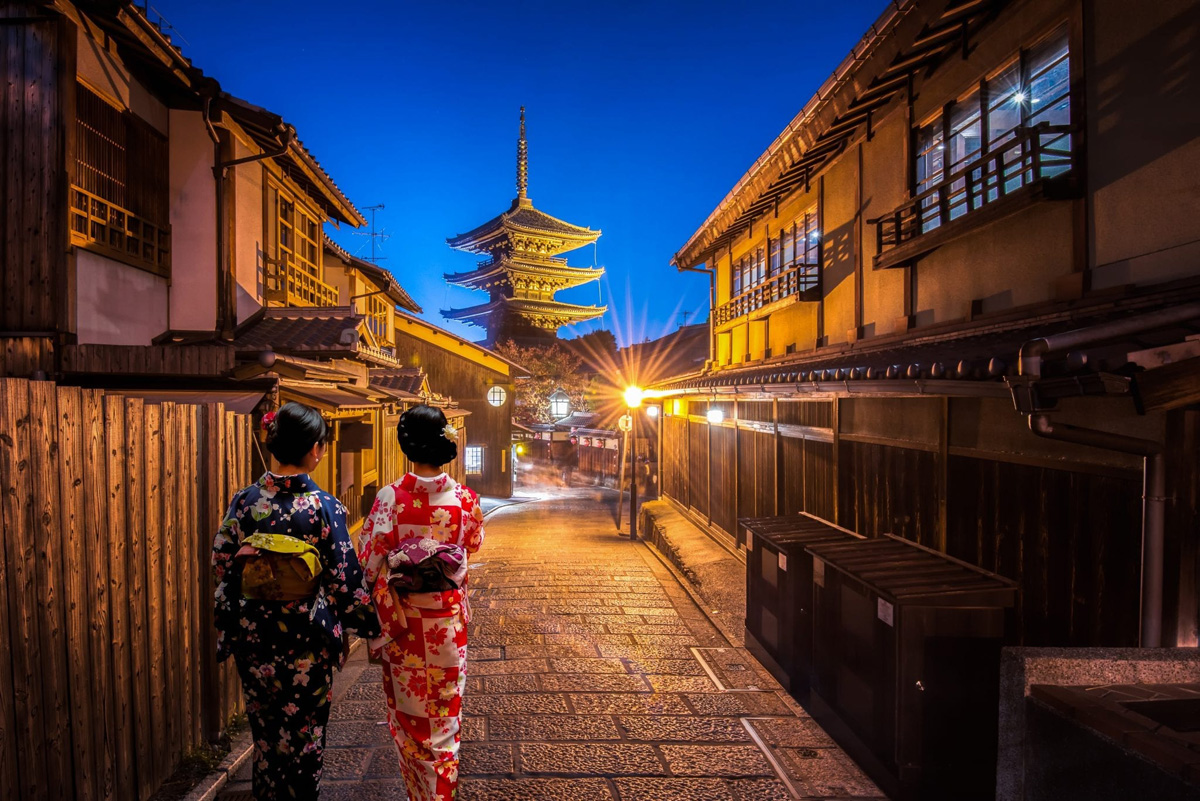
Gion in Kyoto
Gion (祇園)[a] is a district of Kyoto, Japan, originating as an entertainment district in the Sengoku period, in front of Yasaka Shrine (Gion Shrine). The district was built to accommodate the needs of travellers and visitors to the shrine. It eventually evolved to become one of the most exclusive and well-known geisha districts in all of Japan. Gion is the Japanese translation (via Chinese Qiyuan) of the Buddhist term Jetavana.
Fuji recommendation
Fuji recommendation
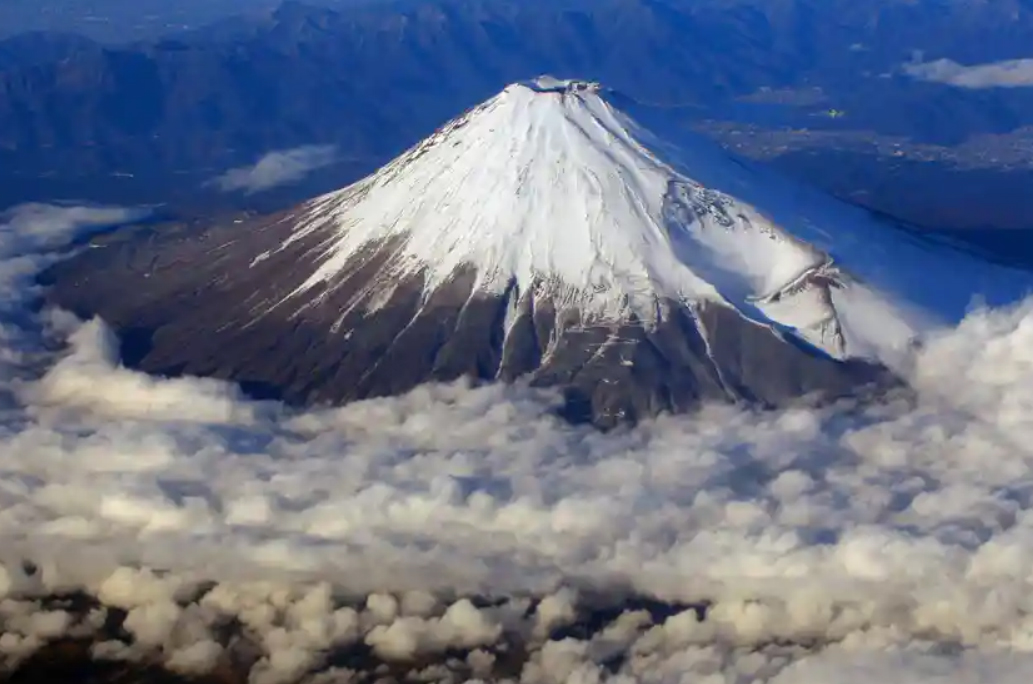
Mount Fuji
It is often symbol of Japan, one of the largest active volcanoes in the world. The highest mountain in Japan (3775.63 meters altitude) is covered with snow, which is as charming as the landscape on a postcard. Climbing Mount Fuji is also a good choice. The scenery on the mountain is more charming. The mountain is located about 100 km (62 mi) southwest of Tokyo and is visible from there on clear days.
Hakone recommendation
Hakone recommendation
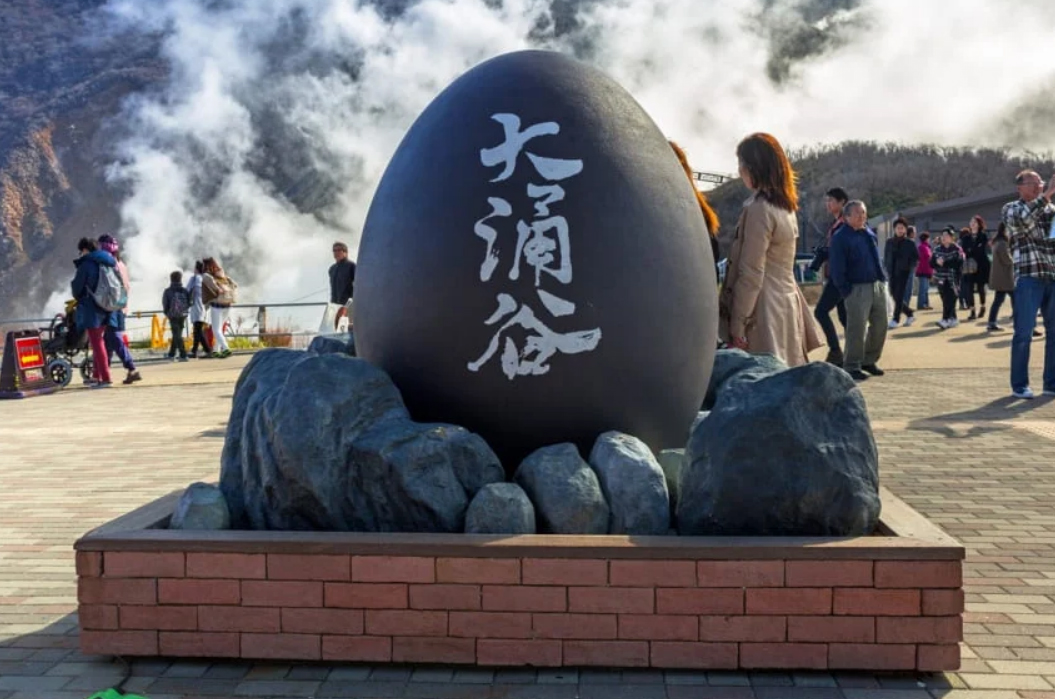
Owakudani (大涌谷, Ōwakudani)
A major source of Hakone hot spring, also known as the great hell, is the remains of the crater formed by the volcanic eruption more than 3000 years ago. But the sulfur content is too high, can't be soaked directly. You can enjoy sulfur vapor and hot springs. And can overlook Mount Fuji when the weather is fine.
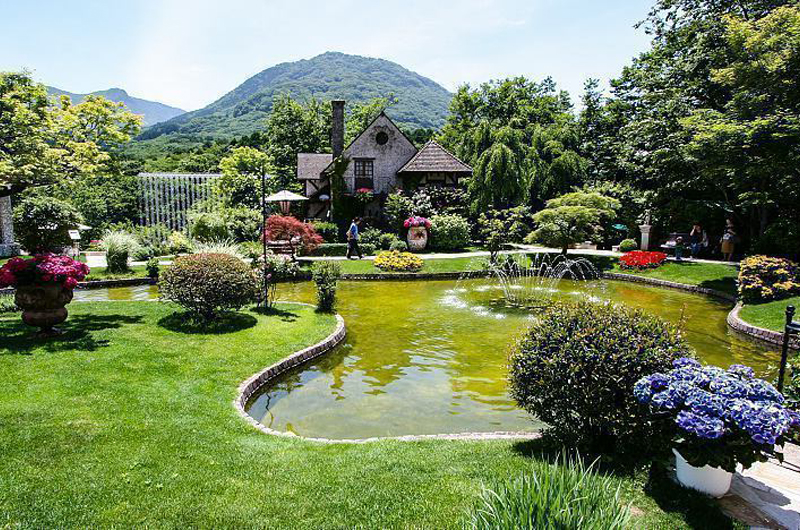
Hakone Venetian Glass Museum
The Hakone Glass no Mori (箱根ガラスの森) features Italian styled buildings housing a museum and shops. Outside is a large strolling garden surrounding a canal-like pond. The Glass no Mori's Venetian Glass Museum is Japan first art museum specializing in Venice glasses. There are about 100 pieces of Venice and modern Venice from fifteenth Century to nineteenth Century. They are the Venice glass art that once made European aristocrats crazy.
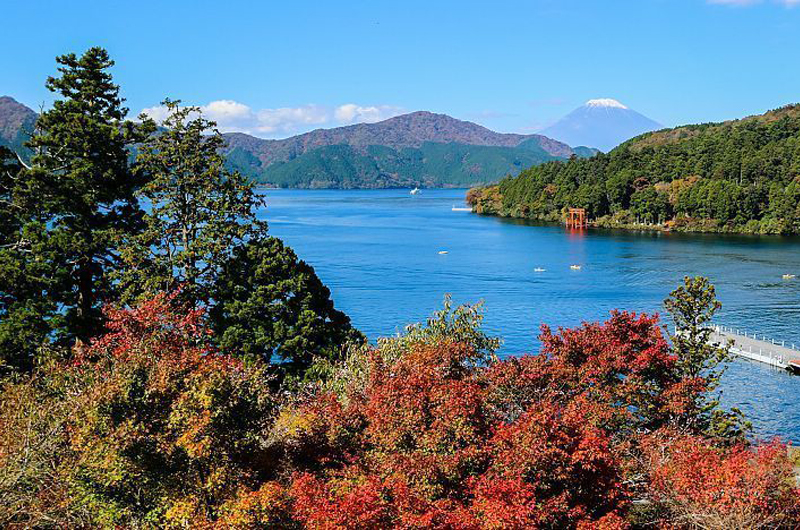
Lake Ashinoko
Lake Ashi (芦ノ湖, Ashi-no-ko), also referred to as Hakone Lake or Ashinoko Lake, is a scenic lake in the Hakone area of Kanagawa Prefecture in Honshū, Japan. It is a crater lake that lies along the southwest wall of the caldera of Mount Hakone, a complex volcano that last erupted in 1170 CE at Ōwakudani. The lake is known for its views of Mount Fuji, its numerous hot springs, historical sites, and ryokan.

Hakone Shrine
Hakone shrine was founded in 757 on Hakone mountain, which has been a sacred place of mountain belief since ancient. It is revered as a famous shrine of Hakone power, the general garrison of Kanto. As a very effective God of good luck, traffic safety, success and it is believed by people. The torii is located the coast of Ashinoko lake and can be seen when you have a boat trip on the lake..
Karuizawa recommendation
Karuizawa recommendation
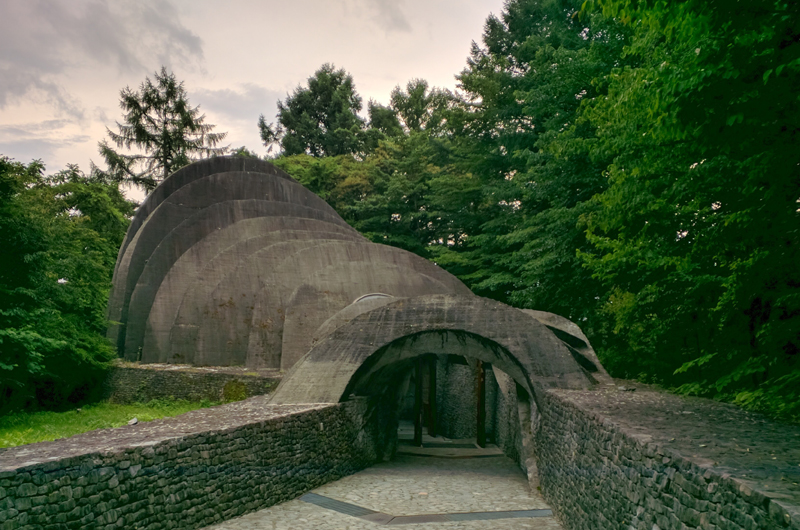
Stone Church (Uchimura Kanzo memorial hall)
A unique building built in a quiet forest. The designer of the church is Kendrick Kellogg, an American designer known as "natural architecture first". Based on the concept that "nature is the real place to pray", the design integrates "stone, light, water, green and trees" - the five basic elements of nature into the design, reflecting the design concept of "natural church".
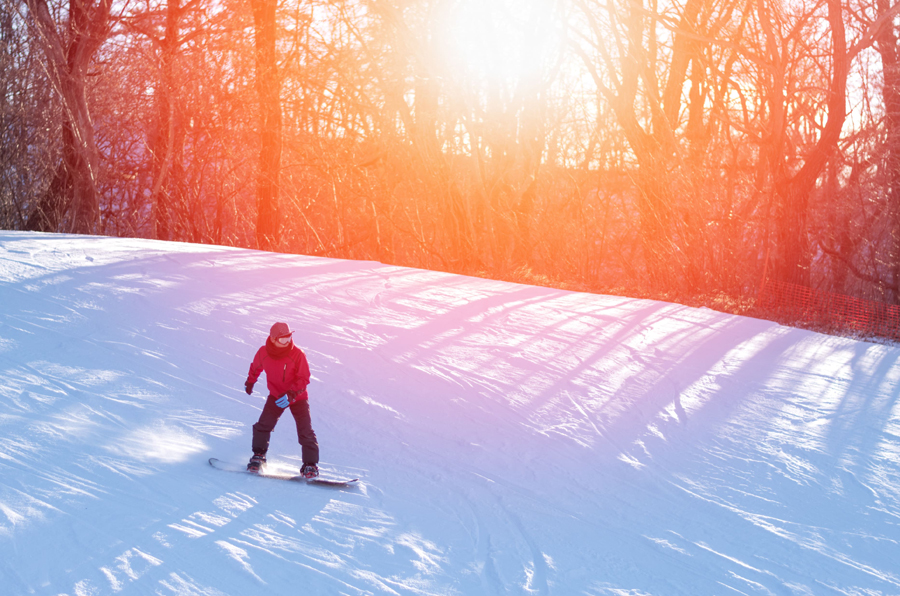
Karuizawa Prince Hotel Ski Resort
Karuizawa is a famous summer resort in Japan, also known as the back garden of Tokyo. A large number of artificial snowfall technologies are adopted to ensure the long-term optimal skiing environment. At present, the ski resort has 10 trails, including 5 primary trails, 2 Intermediate trails and 3 Advanced trails, of which the maximum slope of the trail is 30 degrees, the maximum distance of the trail is 1200 meters, and the elevation difference is 215 meters.

Hoshino Hot Spring
A secluded moutainside ryokan resort with natural hot springs. In a richly forested mountain setting, 90 minutes and a world away from Tokyo, our showcase retreat provides the ultimate fresh-air escape with award-wining ecotours, acclaimed birdwatching and healing hot springs. After a day on woodland trails, relax with seasonal cuisine, spa and treatments inspired by Zen precepts, or enjoy a cypress-bath soak in the privacy of your spacious guestroom.

Karuizawa Erz Toy Museum
With a history of over 300 years and made by the hands of true artisans, toy making is a form of traditional craftsmanship. At the Erz Toy Museum, a number of high quality wooden and educational toys are on display. Erz Toy Museum is an exhibition displaying traditional wooden and educational toys from Germany and Europe and was opened as a sister museum to the toy museum in Seiffen, Germany in 1998.
Nagano recommendation
Nagano recommendation
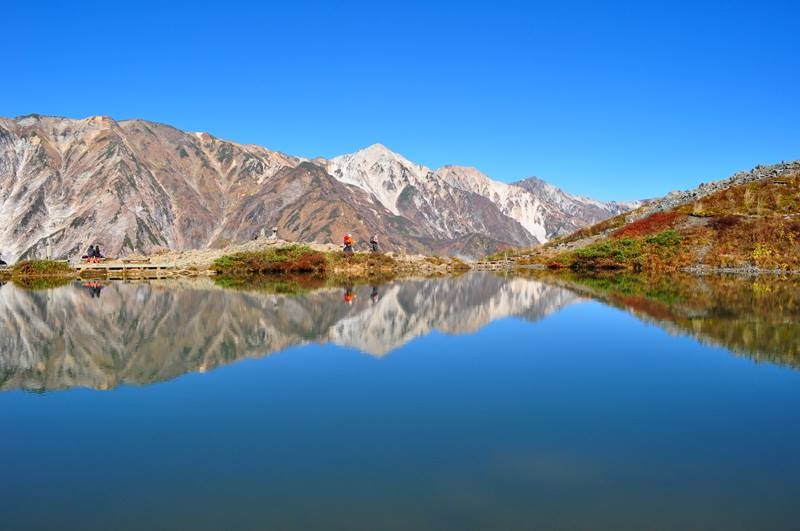
Hakuba Mura
Hakuba Mura is a resort located in the northwest of Nagano, with an altitude of 900 meters. It is known as the little Alps in Japan. It is not only a ski resort in winter, but also a summer resort in summer. There are many hot springs and ski resorts. In spring and summer, can see the residual snow, alpine plants and majestic mountains with an elevation of 3000 meters.
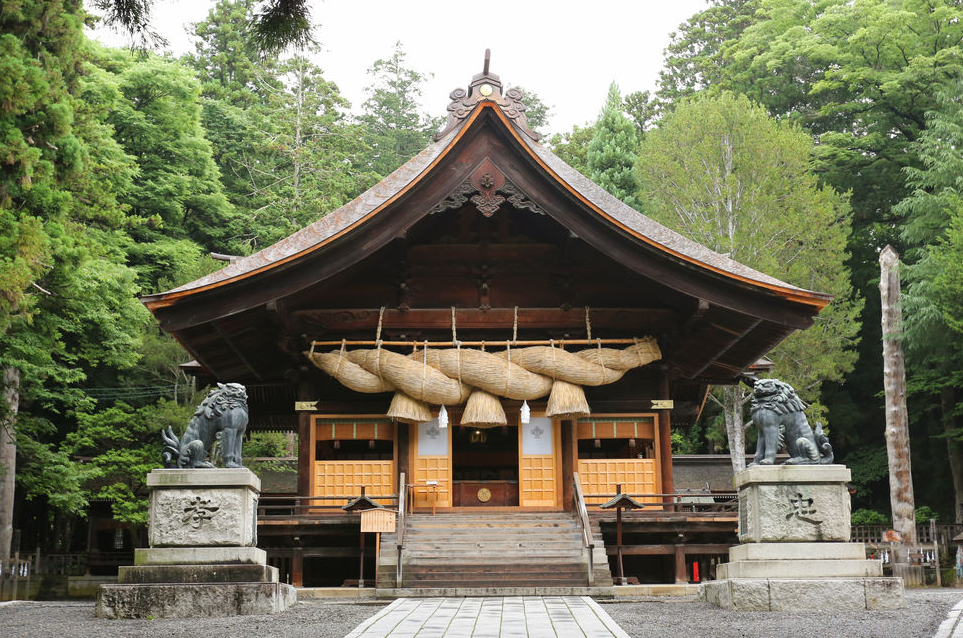
Suwataisha
Suwa Grand Shrine (Japanese: 諏訪大社), historically also known as Suwa Shrine (諏訪神社 Suwa-jinja) or Suwa Daimyōjin (諏訪大明神), is a group of Shinto shrines in Nagano Prefecture, Japan. The shrine complex is the ichinomiya of former Shinano Province and is considered to be one of the oldest shrines in existence, being implied by the Nihon Shoki to already stand in the late 7th century.
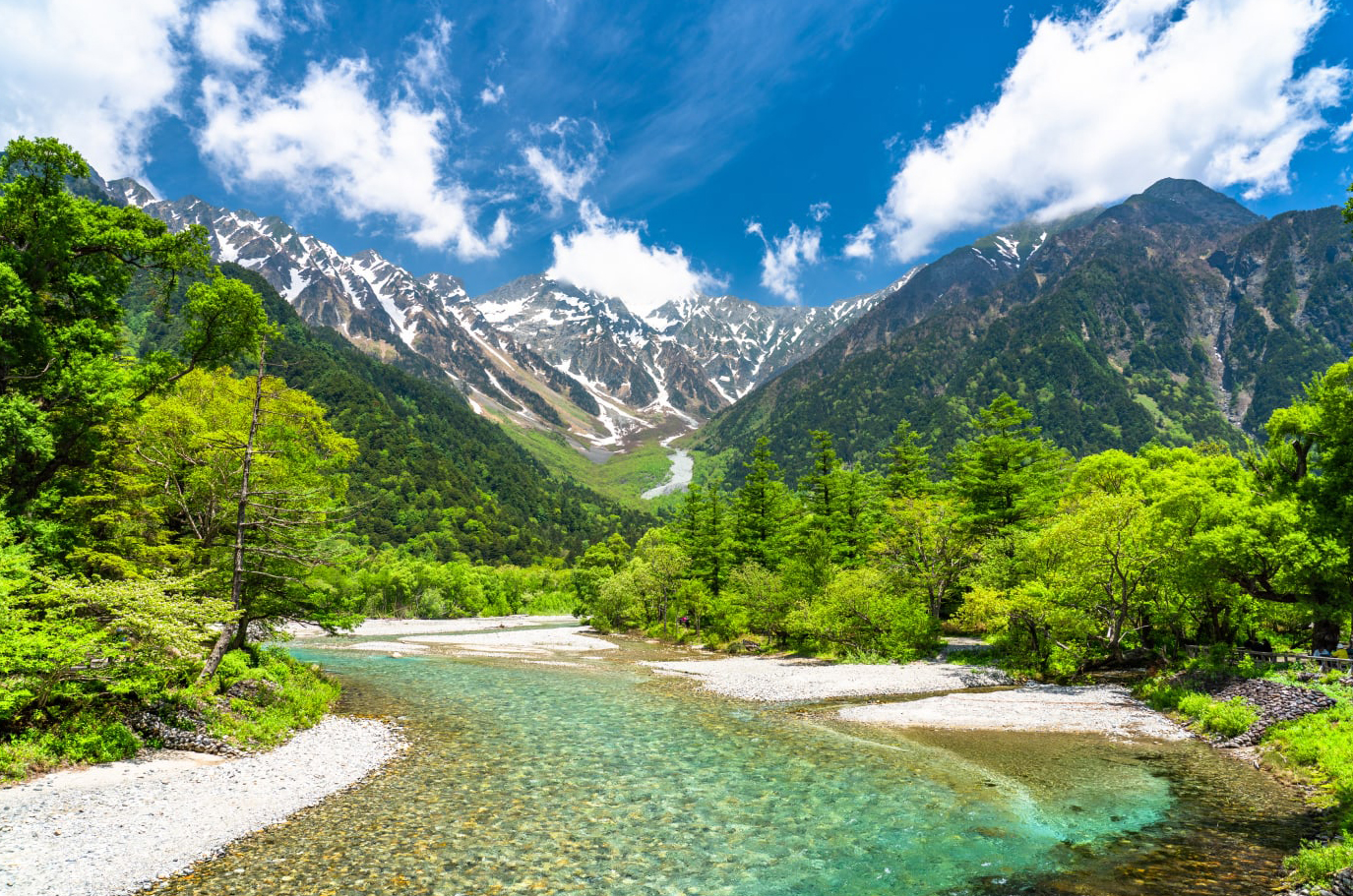
Kamikochi - Chubu Sangaku National Park
Chubu Sangaku National Park, located in the center of the Hida Mountain Range (also called the Northern Japan Alps), is the highest mountain range in Japan looming over the central of the main island. The Hida Mountain Range makes the backdrop of the park and stretches from the north to south. The mountains lie in two rows in the northern part and in three rows in the southern part. It is open from mid-April to mid-November. The green sprouts of spring (May to June), flowers in summer (July to August), and fall leaves (October) are the most popular seasons to visit.

Nakasendo Tsumagojuku
In 1976, the important conserving group of buildings preservation districts. The scattered and orderly old houses are typical Japanese houses, with black tiles, lattice windows, sliding doors, tatami inside, and some stoves. This is the preservation area of Japanese traditional buildings.Nakasendo Tsumagojuku is one of the best preserved villages.
Kamakura recommendation
Kamakura recommendation
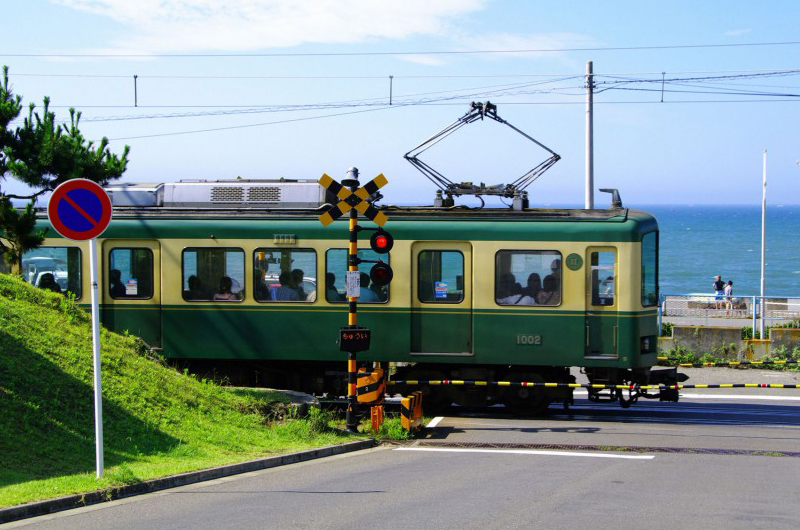
Kamakurakoko-Mae Station
Kamakurakōkōmae Station (鎌倉高校前駅, Kamakurakōkōmae-eki) is a commuter railway station on the Enoshima Electric Railway (Enoden), located in the Koshigoe neighborhood of the city of Kamakura, Kanagawa Prefecture, Japan. Though small in size, it is known for its scenic beauty, as it commands an open view of the Pacific Ocean and Mount Fuji from the station platform. The most famous scene in the comic film slam dunk. It is an unmanned station that has been selected in the "100 choices of Kanto station". This station become a favorite of animation lovers.
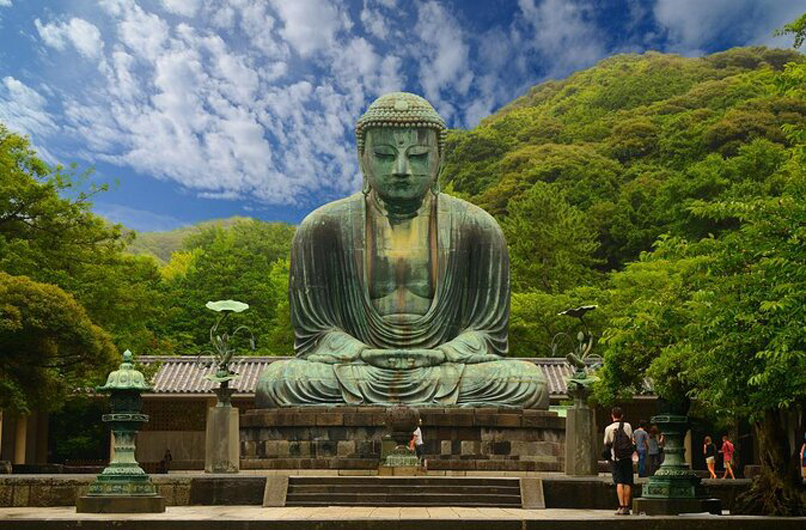
Kotokuin Great Buddha of Kamakura
Kamakura Buddha, 11.5m high, is hollow inside, which can be accessed from the bottom behind the Buddha statue. As one of the three major Buddha statues in Japan, Kamakura Buddha has the same fate as Kamakura, and is often suffering from disaster. Since 1498, the Buddha has been enshrined in the open air until now.

Enoshima Island
A peninsula near the coast of Shonan, was the place where Akira Sendoh fishes who from the comic film slam dunk. It is mainly winding paths suitable for walking. There are aquarium, Iwaya caves, Ryuren no Kane (The Bell of the Dragon’s Love), Enoshima Shrine, Bronze Torii Gate, and others.
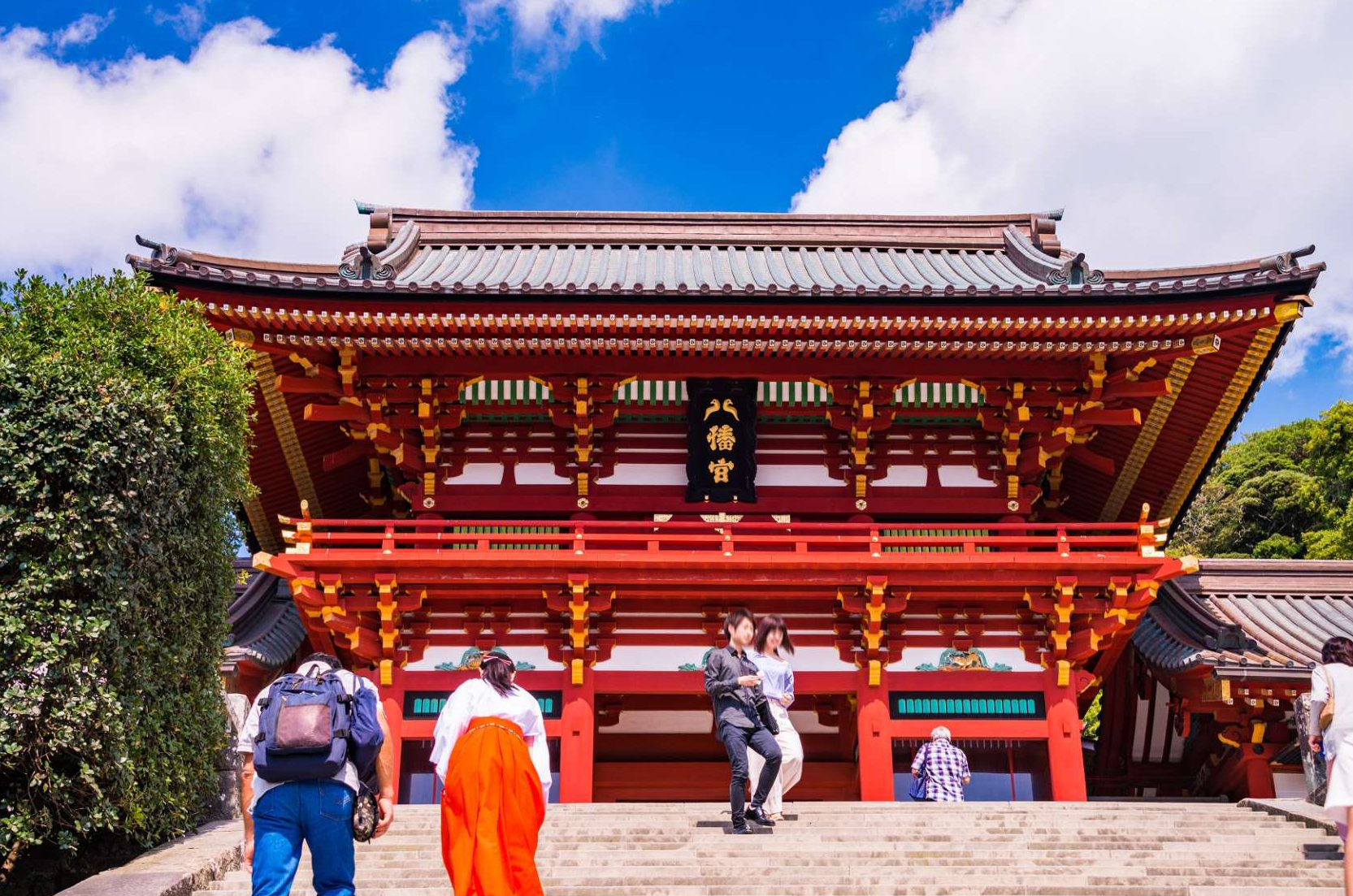
Tsurugaoka Hachimangu Shrine
Tsurugaoka Hachimangū (鶴岡八幡宮) is the most important Shinto shrine in the city of Kamakura, Kanagawa Prefecture, Japan. The shrine is a cultural center of the city of Kamakura and serves as the venue of many of its most important festivals with two museums. Built as a tutelary shrine for the Genji family in 1180, this is the most gorgeous shrine in Kamakura attracting millions of visitors for its history, culture, architecture and various traditional events.

Hasedera Temple
Hase-dera (海光山慈照院長谷寺, Kaikō-zan Jishō-in Hase-dera), commonly called the Hase-kannon (長谷観音) is one of the Buddhist temples in the city of Kamakura in Kanagawa Prefecture, Japan, famous for housing a massive wooden statue of Kannon. This legendary old temple boasts of its large wooden gilt statue of Eleven-faced Goddess of Mercy, a beautiful Japanese-style garden and the nice view of the ocean from a terrace.
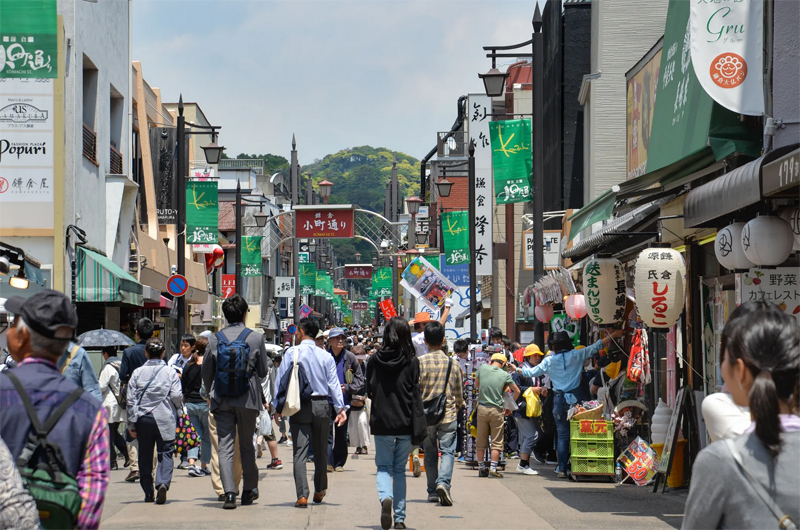
Kamakura Komachi Dori Shopping Area
Fashionable street in the middle of an ancient city. That is the most famous commercial shopping street in Kamakura. Here are concentrated local specialties. There are not only the most authentic snacks and dishes in Japan, but also beautiful trinkets and souvenirs. That is famous commercial street. With humble beginnings as a modest street market centuries ago, the area has transformed into a symphony of shopping and commerce.
Yokohama Recommended
Recommended places in Yokohama
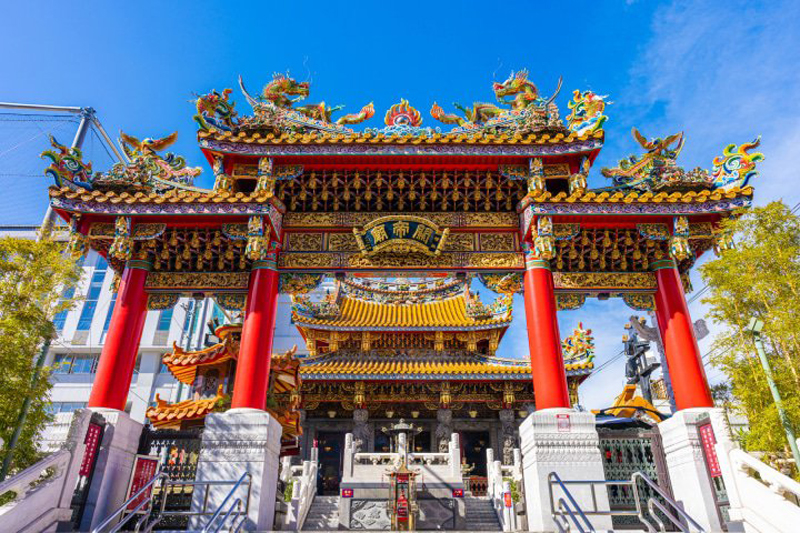
Yokohama Chinatown
Japan's largest Chinatown, including gourmet restaurants dominated by Chinese restaurants, gift shops, and more than 500 stores here. On the basis of FENGSHIU, there is a decorated archway had been build at East, West, North and south of Zhonghua Street. It is about 160 years old, with a population of about 3,000 to 4,000. Today, only a few Chinese people still live there, most being from Guangzhou.
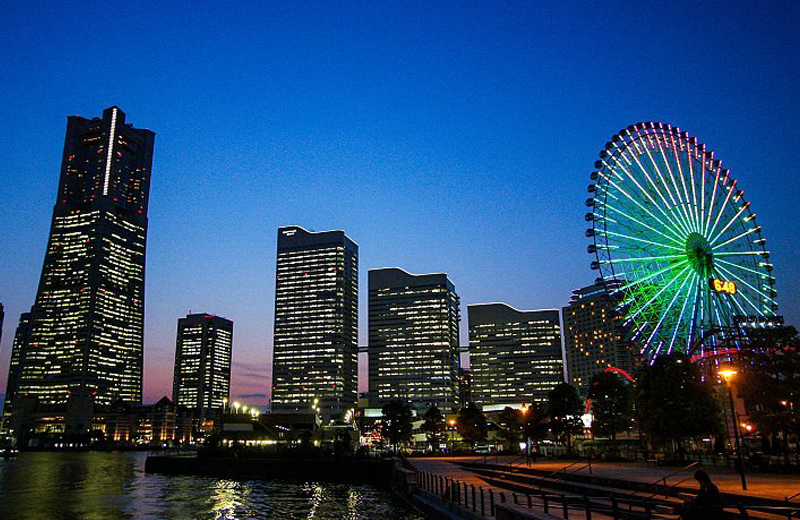
Minato Mirai 21
The name represents the dream that the city as neighborhoods in Yokohama in 21st century. It used to be a shipbuilding base near the sea. Now it has hotels and amusement parks, cultural places such as convention and Exhibition Center, art museum and concert hall. It has become one of the famous tourist in Japan. Minato Mirai 21 was originally proposed as one of Yokohama's six major development plans by the Ichio Asukata, in 1965. Today, about 79,000 people work in Minato Mirai 21.

Yokohama Cosmo World
The world's largest Ferris wheel with clock function "cosmic clock 21 Ferris wheel" is a well-known urban three-dimensional amusement park.That is a well-known scenic spot that can see all the earth targets in Yokohama. Composed of three areas, there are about 30 kinds of amusement facilities. Cosmo World is a compact but varied amusement park with enough entertainment for both kids and adults to spend an afternoon.
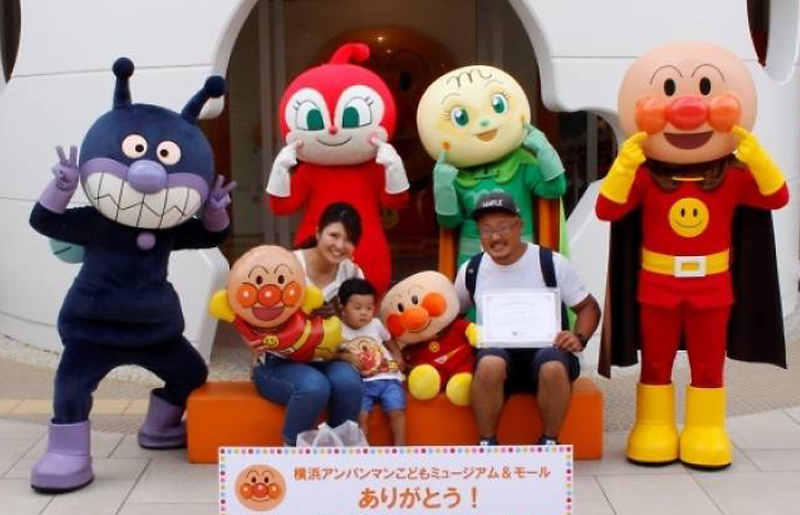
Yokohama Anpanman Children's Museum
Anpanman, the hero of illustrated books by Takashi Yanase, has a face made of anpan, and is a strong and kind friend of just causes. Made into a television animated series in 1988, he immediately became a popular hero with children. The long-running series continues to this day. There is Anpanman car to take and children are happy to play here. You can enjoy the amusement facilities of popular animation Anpanman world. Anpanman will appear somewhere and can take pictures with them.
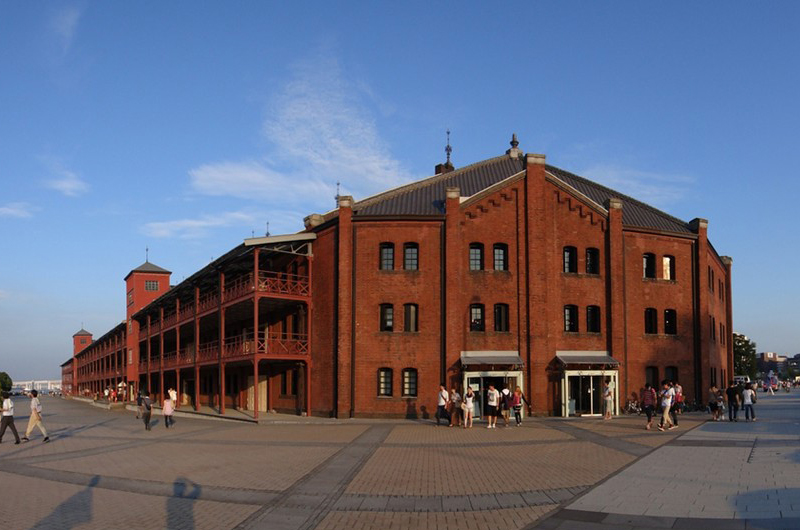
Red Brick Warehouse
As a historic building symbolizing the development of Yokohama. The square and park near the red brick warehouse constitute the scenic spot, which has become a hot spot of Yokohama tourism. Especially the lighting effect after dusk is very effective. It is one of the famous night scenes in Yokohama.
Osaka recommendation
Osaka recommendation

Osaka Museum of History
Museum was located in the west of Osaka City Park, it shows the historical periods of Osaka from ancient times to the present with cultural relics display, physical model and multimedia display. The palace model reconstructed in equal proportion according to the original appearance of Nanbo Palace on the top floor is one of the "priceless treasures" of the museum.
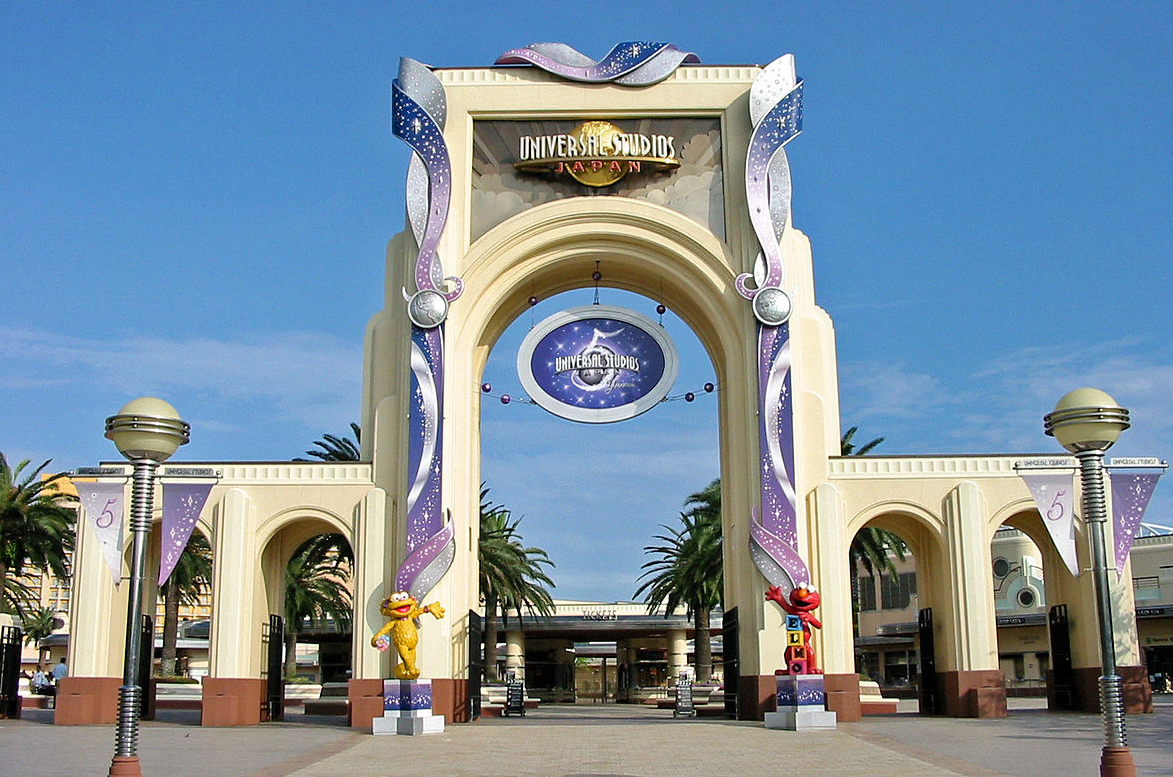
Universal Studios Japan
Universal Studios Japan located in the Konohana-ku of Osaka, it is one of the 4 Universal Studios in the world. There are various parent-child entertainment facilities, cartoon characters with Japanese characteristics, and a film theme amusement park, which is divided into 8 areas: New York District, Hollywood District, Old golden mountain area, Harry Potter's magic world, water world, goodwill village, universal Wonderland and Jurassic Park.

Osaka Aquarium Kaiyukan
Osaka Aquarium Kaiyukan is one of the largest aquariums in the world. It is famous for its huge whale shark that is displayed in the water tank in the center of the museum. You can take the elevator to the highest 8th floor and visit from top to bottom. The touch pool can get close to marine life.
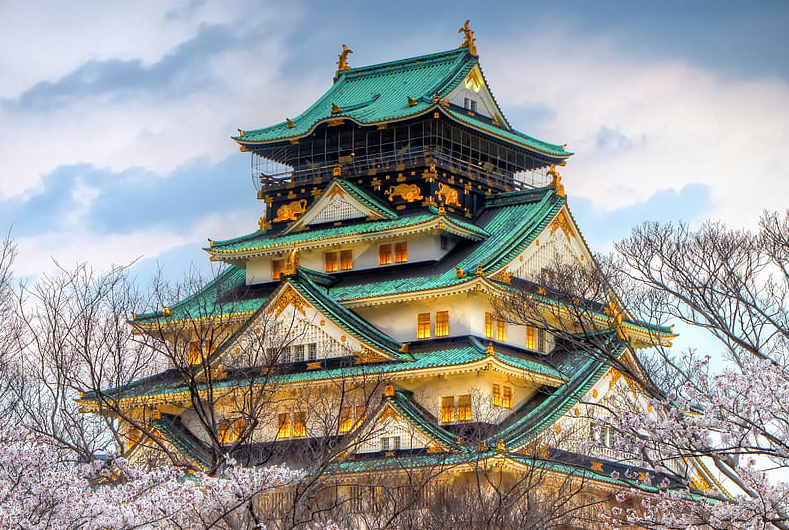
Osaka Castle Park
Osaka Castle Park (大阪城公園, Osaka-Jō-Kōen) is a public urban park and historical site situated at Osaka-Jō in Chūō-ku, Osaka, Japan. It lies on the south of the Ōkawa (Kyū-Yodo River) and occupies a large area in the center of the city of Osaka. This park is the second largest park in the city. The park was constructed on a site with a long history. Many busking groups perform in the park. In spring, cherry blossom and plum blossom viewing is popular at this park.
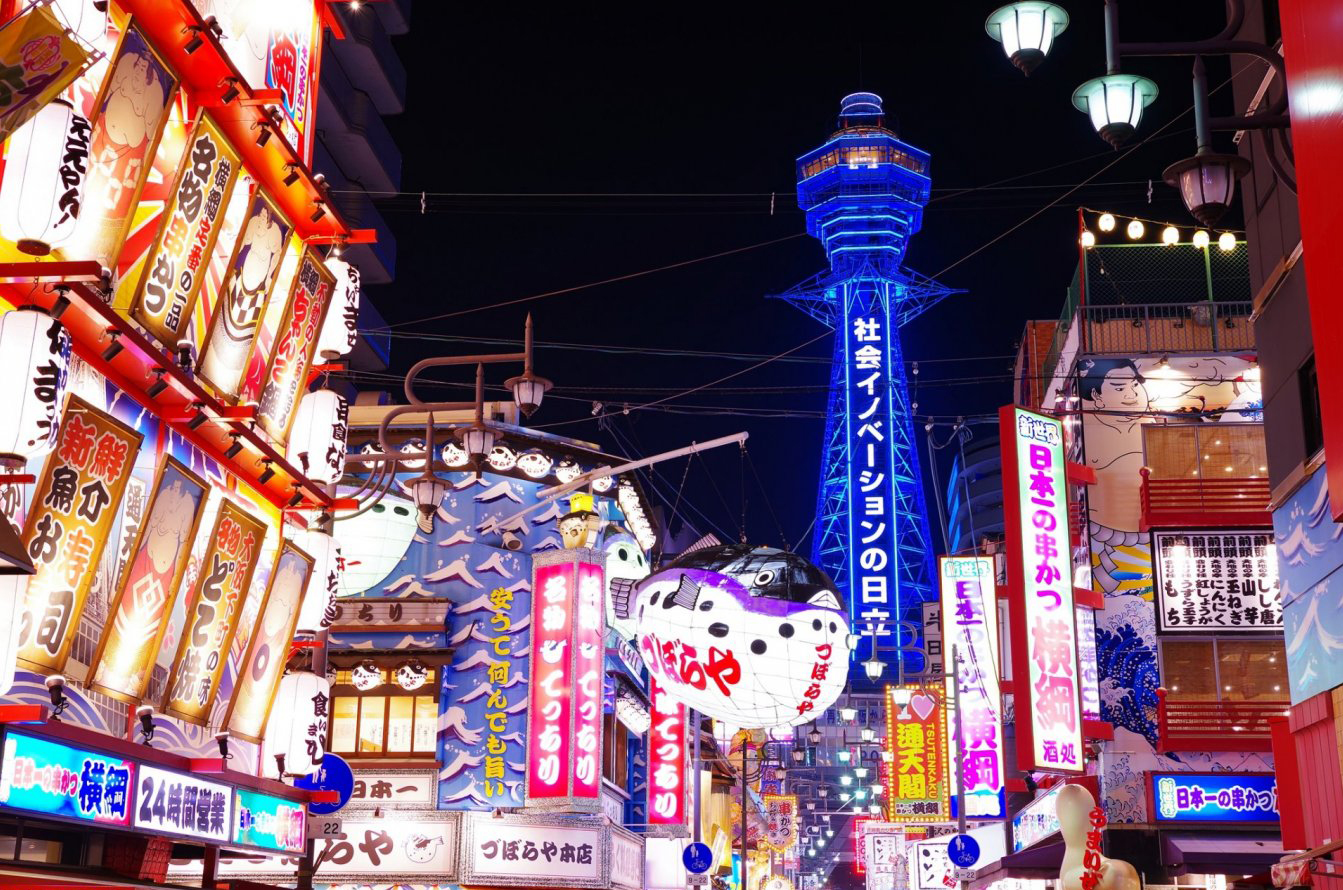
Tsutenkaku
Tsūtenkaku (通天閣, lit. "Tower Reaching Heaven"), owned by Tsūtenkaku Kanko Co., Ltd. (通天閣観光株式会社, Tsūtenkaku Kankō Kabushiki-gaisha), is a tower and well-known landmark of Osaka, Japan and advertises Hitachi. It is located in the Shinsekai district of Naniwa-ku, Osaka. Its total height is 103 m; the main observation deck is at a height of 91 m. The tower is also famous for its neon lights, which change every few years. The neon lights have now been replaced by LED lighting, showing a different color set for every two months (e.g. pink for cherry blossom in March/April).

Dotonbori
Dōtonbori or Dōtombori (道頓堀, pronounced [doːtomboɾi]) is one of the principal tourist destinations in Osaka, Japan, running along the Dōtonbori canal from Dōtonboribashi Bridge to Nipponbashi Bridge in the Namba district of the city's Chuo ward. Historically a theater district, it is now a popular nightlife and entertainment area characterized by its eccentric atmosphere and large illuminated signboards. One of the area's most prominent features, a billboard for confectionery company Glico displaying the image of a runner crossing a finishing line, is seen as an icon of Osaka within Japan.
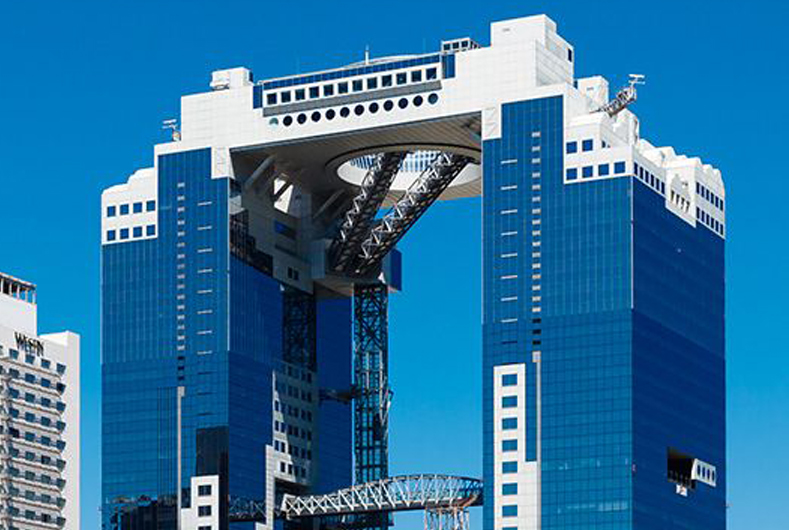
Umeda Sky Building
The Umeda Sky Building (梅田スカイビル, Umeda Sukai Biru) is the nineteenth-tallest building in Osaka Prefecture, Japan, and one of the city's most recognizable landmarks. It consists of two 40-story towers that connect at their two uppermost stories, with bridges and an escalator crossing the wide atrium-like space in the center. It is located in Umeda district of Kita-ku, Osaka. The building features a rooftop observatory, The Floating Garden Observatory, as well as an underground market that attempts to recreate the atmosphere of Osaka in the early 20th century.
Nara recommendation
Nara recommendation
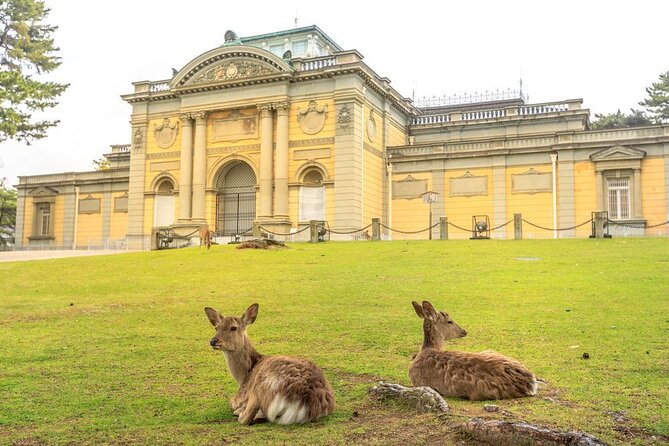
Nara National Museum
The Nara National Museum (奈良国立博物館, Nara Kokuritsu Hakubutsukan) is one of the pre-eminent national art museums in Japan. The museum is noted for its collection of Buddhist art, including images, sculpture, and altar articles. The museum houses and displays works of art belonging to temples and shrines in the Nara area. Properties kept in the Shōsōin repository are exhibited each year in the autumn. In the museum's collection is the 12th-century Hell Scroll (Nara National Museum) (地獄草紙), 11th or 12th-century mandala Jōdo mandara-zu, and the 9th-century sculpture of the seated Buddha Yakushi.

Nara Park
Nara Park (奈良公園, Nara Kōen) is a public park located in the city of Nara, Japan, at the foot of Mount Wakakusa. Established in 1880 it is one of the oldest parks in Japan. Over 1,200 wild sika deer (シカ or 鹿 shika) freely roaming around in the park are also under designation of MEXT, classified as natural treasure. While the official size of the park is about 502 hectares (1,240 acres), the area including the grounds of Tōdai-ji, Kōfuku-ji, and Kasuga Shrine, which are either on the edge or surrounded by Nara Park, is as large as 660 hectares (1,600 acres).
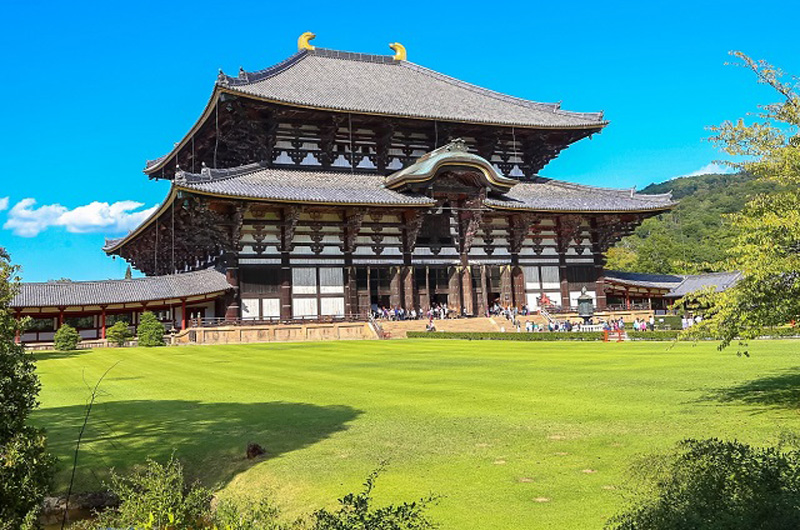
Todai-ji Temple
It is the general temple of Japanese temples,built by Shomu Tenno in 752 to worship the Giant Buddha, it has been listed as a world cultural heritage. The Great Buddha Hall is the largest wooden ancient building in the world. A 16 meter high Vairocana Buddha statue is enshrined in the hall, which is the largest bronze Buddha statue in the world.
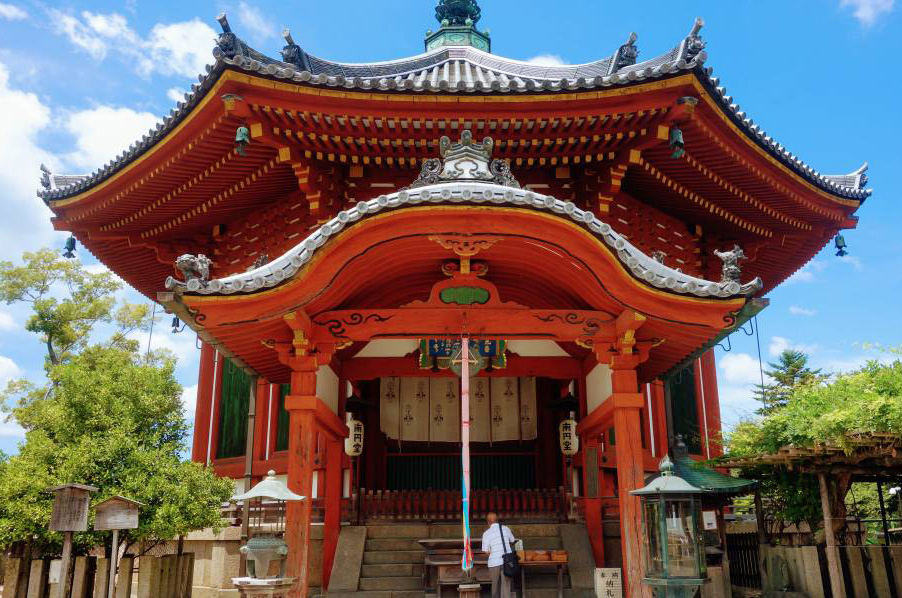
Kofuku-ji Temple
Kofuku-ji Temple is honnzann of East Asian Yogacara,one of Nanto Rokushu and nanto shichidaiji. Its predecessor dates back to 669.The five-storied pagoda was the second tallest ancient tower in Japan after the Tou Temple in Kyoto. It can be called the symbol of Nara.The main hall is a Chinese architecture.

Kasugataisha shrine
It had built more than 1300 years ago, is the omamori of Nara. It is the headquarters of kasugataisha shrines all over Japan. There are countless mossy stone lanterns on both sides of the Kasugataisha shrine. Stone lanterns are usually accepted by believers for lighting and exorcising evil spirits.

Toshodaiji Temple
It located in gojocho Nara,was built by Senior Monks of Tang China. The best preserved architecture of the Tang buildings in the world and Japanese national treasure Temple. The temple retains the strong architectural style of the prosperous Tang and is a symbol of exchanges between China and Japan.
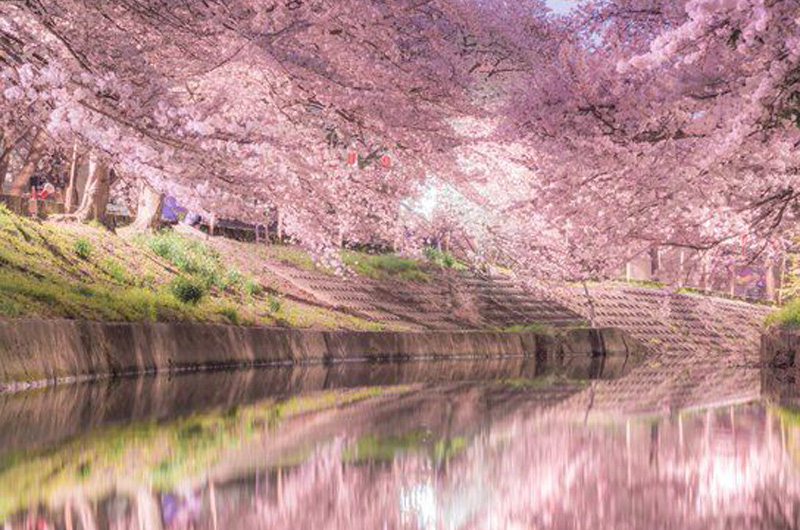
Saho River
The source of Saho river comes from the kasuga mountains,a level of river flowing within the city of Nara. About 3km from Funahashi street to Daian temple, more than 1000 cherry trees are planted along the coast, with a tree age of about 30 ~ 40 years. It is one of the few cherry viewing resorts in Nara.
Uji recommendation
Uji recommendation

Byodoin Temple
It was a temple built by fujiwara no yorimichi to modify his father's Villa during the Fujiwara in 1052. The Phoenix Hall was built the following year as Amity Hall, and was the only building created at that time. The Garden (Historic Places) is the remaining buildings of the Safe Age. The Phoenix Hall and the Azhi Pool are the center of the building.
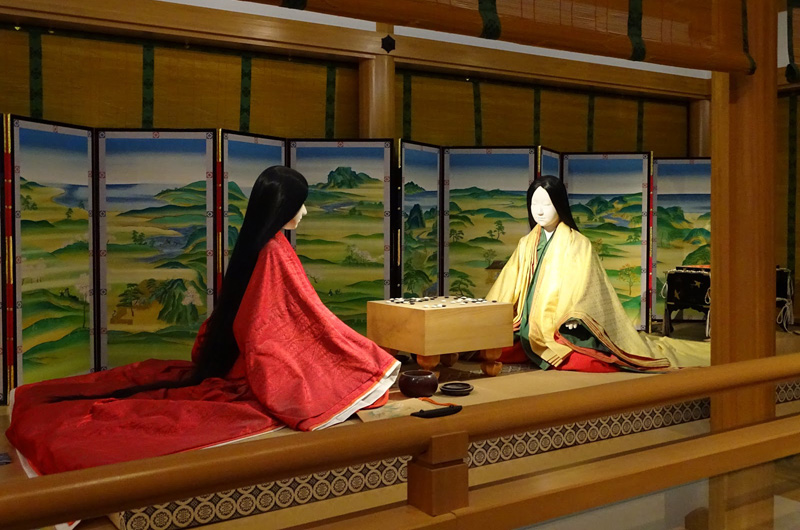
The Tale of Genji Museum
The Tale of Genji Museum uses multi-media acoustic and optical effects to introduce the charm and synopsis of Genji with bright and clear high-quality images. The main theme of the exhibition is a part of Genji Monogatari, Hikaru Genji and Heian-kyo. Show the "Genji and Dynasty picture roll" in the form of images, and introduce the charm and outline of Genji story.
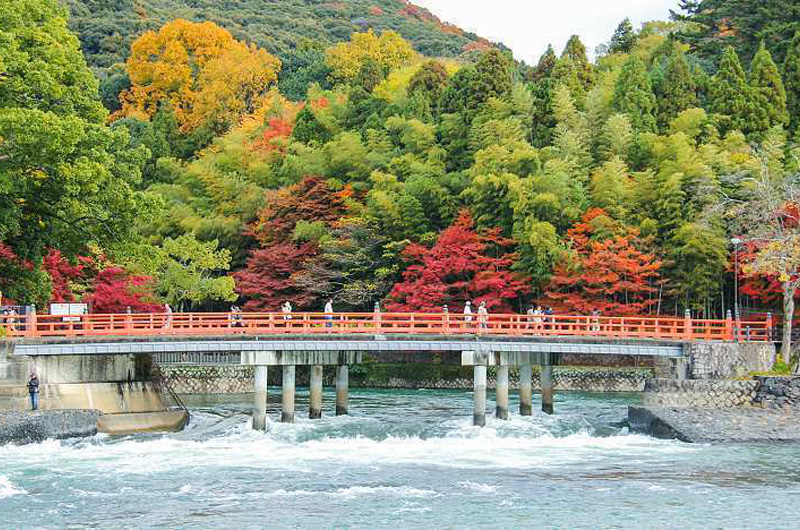
Uji River
The river basin covers an area of 8240 square kilometers and is 75.1 kilometers long.River is the lower reaches of Takasegawa flowing out of Biwa Ko. It is a torrent with rich nutrition and rich fishery resources. In spring, cherry blossoms bloom along the river bank,that is a good view.
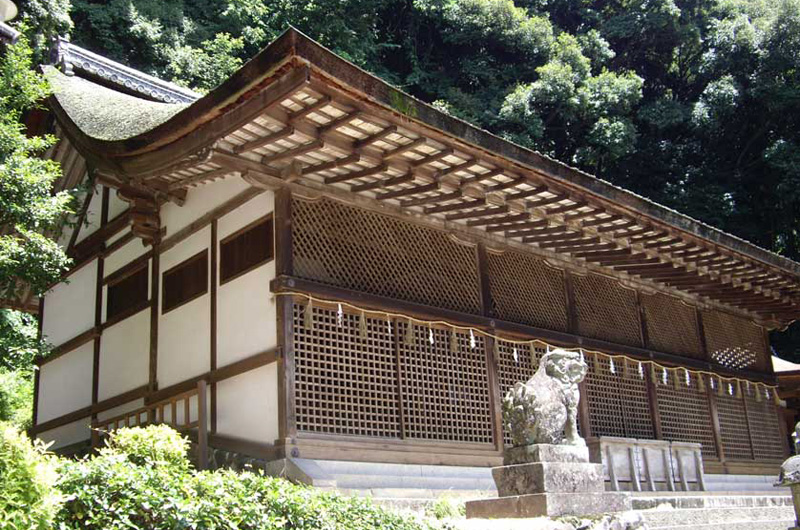
Ujigami Shrine
Ujigami Shrine was located in the north,that was the oldest shrine in Japan and one of the constituent units of the world cultural heritage "ancient capital Kyoto cultural property". In addition to the oldest existing shrine main hall, the buildings before the 14th century are still preserved.
Hokkaido recommendation
Hokkaido recommendation
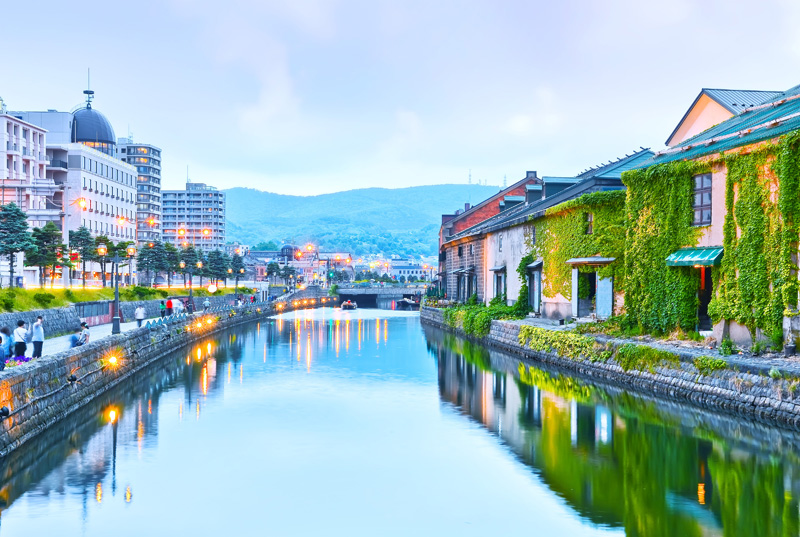
Otaru Canal
Otaru canal was a landmark landscape in Otaru and even Hokkaido. It is famous for the film Love Letter. The scenery in four seasons is different, especially in winter. You can rent bicycles to visit the Otaru canal. There are rickshaw drivers in traditional costumes on the bank. You can also take a cruise ship for sightseeing. The scenery at night is particularly charming.
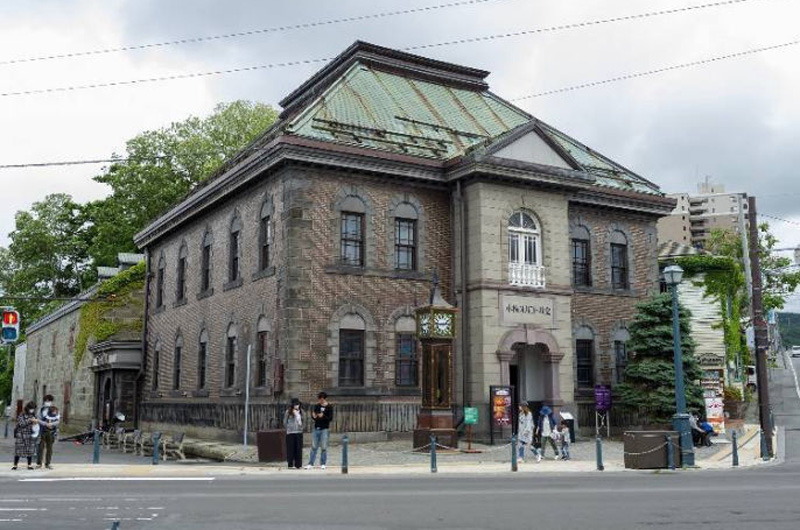
Otaru Orgel Museum
The building was built in 1912. There are more than 3000 kinds of music boxes from all over the world, including doll music boxes with high collection value and automatic performance music boxes. As well as many traditional music boxes that can hardly be seen, which are very ornamental. It is also the oldest and largest music box museum in Japan.
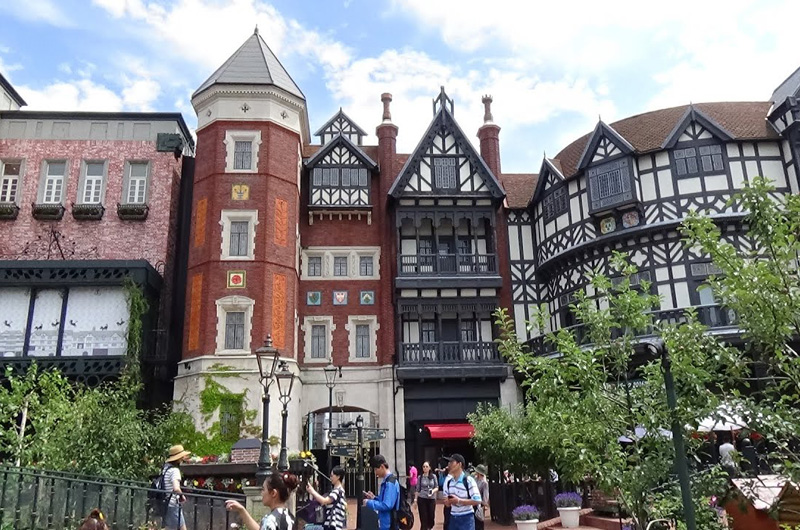
Shiroi Koibito Park
The production area of Shiroi Koibito's chocolate and ice cream is a European-style classical castle full of British atmosphere. There is a road to visit on the third floor of the factory, where you can observe the whole process of making chocolate, and then you can make it yourself in the experience room on the fourth floor, and you can also print the photos on the special biscuit box..
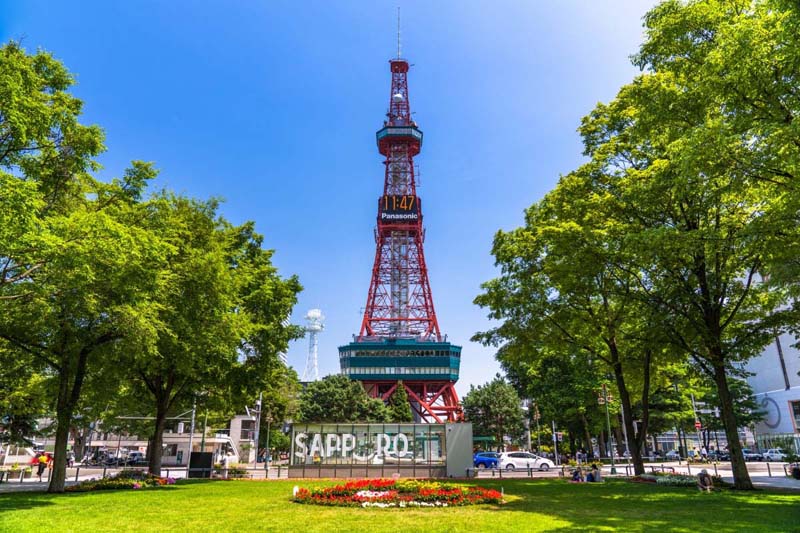
Sapporo Odori Park
The park located in the center of Sapporo, it runs east-west from Odori West 1-chome, Chuo-ku to Odori West 12-chome, and is about 1.5 kilometers long. There are many city sculptures, fountains, lilac trees and locust trees. Sapporo TV Tower and Sapporo Museum are also located in the park. It is the venue for various festivals in Sapporo, such as the Yosakoi Soran Festival in early summer, the beer festival in summer, and the Bon Festival venue.

Sapporo Clock Tower
The clock tower were built in 1878, the clock tower is a landmark building in Sapporo and a symbol of the reclamation period of Hokkaido. Divided into two floors, there is a small exhibition on the history of the clock tower. Every hour, the bell of the clock tower will ring through Sapporo. The clock has been ringing for more than 120 years. It is the last clock tower in Japan.
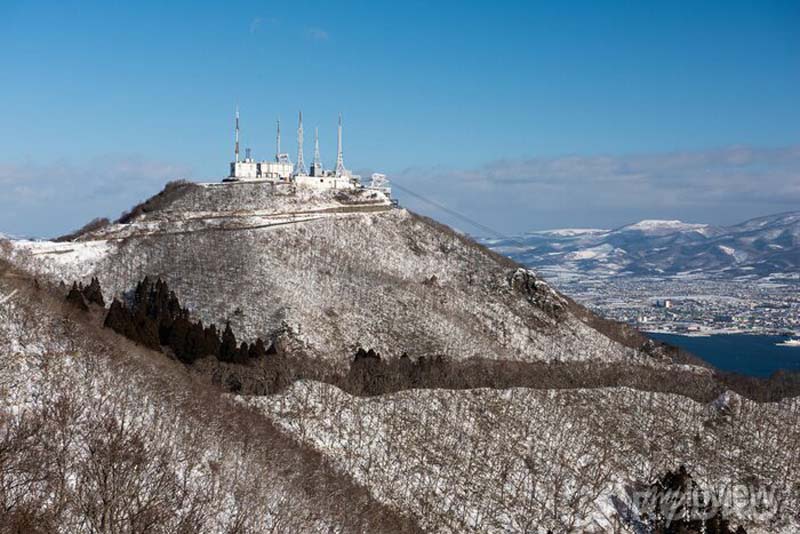
Mount Hakodate
It is a mountainous area located in the western part of the urban area. It is also known as one of the world's three major night scenes along with Hong Kong's Victoria Harbour and Naples, Italy. The various sakaways on the way up the mountain and the western buildings on both sides are the most representative scenery of Hakodate, and the top of the mountain is the best place to watch the night view of Hakodate.

Noboribetsu Onsen Town
The Noboribetsu area is a volcanic-prone area. The abundant geothermal heat and precipitation have created hot springs, making it the most popular hot spring resort on the island, known as "Japan's No. 1 Hot Spring". It is interesting to go out for a walk with Yukata and Geta on the hot spring town.
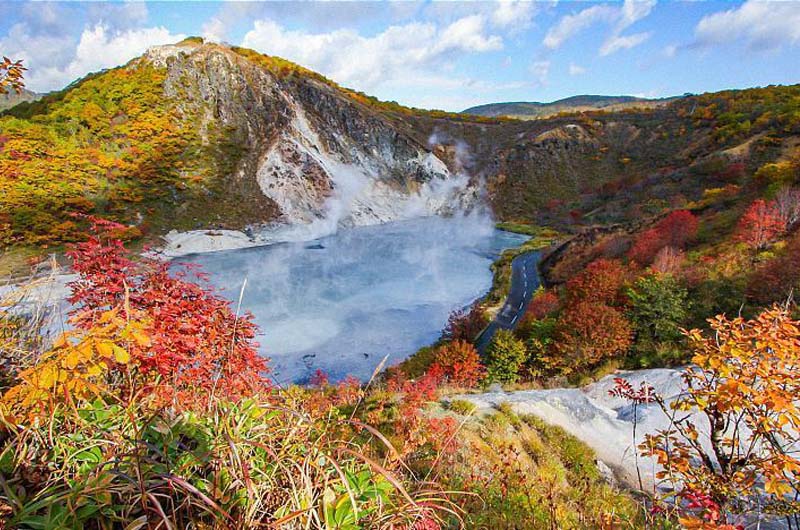
Jigokudani Valley
Jigokudani Valley is the source of Noboribetsu Hot Spring and the most famous scenic spot in Noboribetsu Hot Spring. The volcanic landscape is extremely spectacular. There is a "geyser" at the end of Jigokudani Valley. The water will erupt every once in a while. The temperature of the spring here can be 80 degrees. Below Jigokudani is a hot spring street, and there are all kinds of hotels and restaurants on the street.
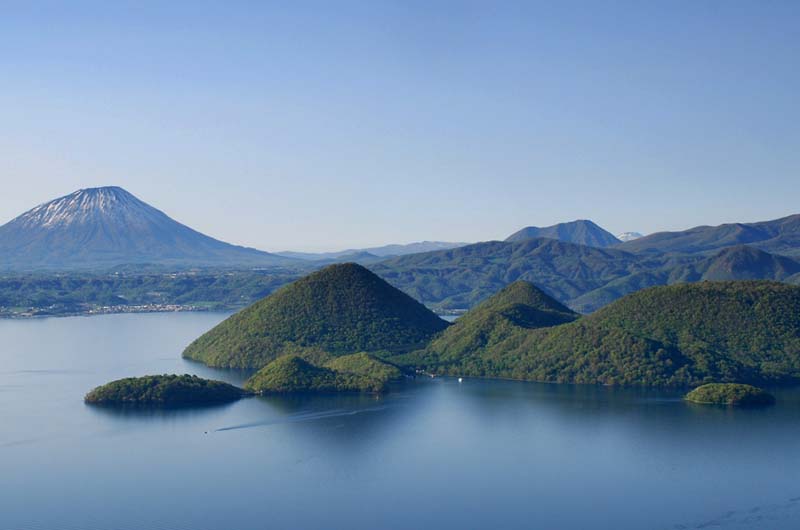
Touyako
Touyako is a lake formed after a volcanic eruption. It does not freeze in winter and is famous for its volcanic hot springs. The cherry blossoms on the lakeside are in full bloom in spring, fireworks will be set off in the evening in summer, and the forests will be dyed in autumn. In addition to enjoying the beautiful scenery, you can also enjoy hiking, fishing, camping and hot springs here.
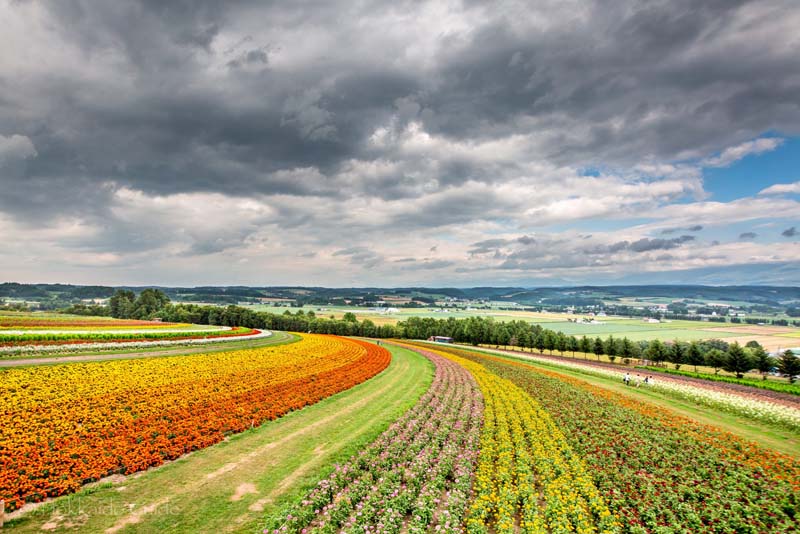
Flower Land Kamifurano
One of the oldest flower fields in Japan. The blooming season here begins in June.During the lavender blooming period, the park also opens visitors to the flower fields to pick flowers and cut a handful of fragrant lavender to make dried flowers. Or participate in various interesting experience activities, make an exclusive lavender pillow, or beautiful lavender candles and so on.

Biei
Biei town located in the middle of Asahikawa City, the second largest city in Hokkaido, and Furano City, which is famous for its lavender. The town streets are similar to the European countryside. The vast hilly terrain, calm and stable hills, and beautiful flower fields in summer. The best season to visit here is summer. The main attractions are the Four Seasons Color Hill, and you can also ride the patchwork road and the super wide-angle road.
What our customers said



DEJA-VU TRAVEL
had established in Hong Kong since 2019, but we have engaged in transportation for more than 8 years and more than 10 years of rich experiences in the tourism.

Address
9/F Sunbean centre, 27 Shing YIP Street Kwun Tong, Kowloon Hong Kong, China

Call Us On
+ 852 / 9492 4345
DEJA-VU TRAVEL
had established in Hong Kong since 2019, but we have engaged in transportation for more than 8 years and more than 10 years of rich experiences in the tourism.

Address
9/F Sunbean centre, 27 Shing YIP Street Kwun Tong, Kowloon Hong Kong, China

Call Us On
+ 852 / 9492 4345